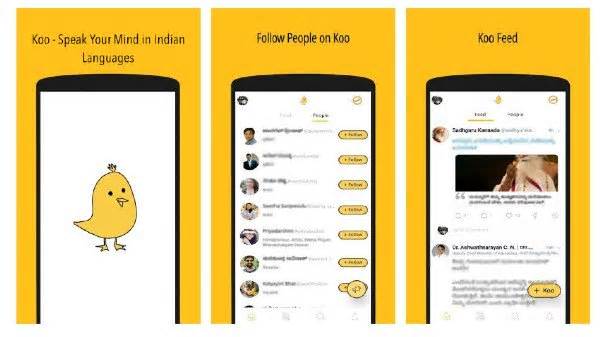Indian government’s recent banning spree has axed various Chinese apps including popular ones like TikTok, Mi Browser Pro, and more. The ban has opened doors for many Indian alternative apps with a focus on the need to be self-reliant. Adding to the list of ‘Made in India’ apps is the Koo app, which comes as an alternative to Twitter.
The Koo app is the Indian alternative app to the popular microblogging site Twitter. Developed by Aprameya Radhakrishna and Mayank Bidawatka, the app allows users to voice their opinion in regional languages. Just like Twitter, the Koo app can be used to express the user’s opinion and views. What’s more, the Koo app won the AatmaNirbhar App Challenge announced by PM Modi recently.
Users can use the Koo app to express via audios, videos, images, and in text format. Presently, the Koo app supports various Indian languages like Hindi, Kannada, Bengali, Tamil, Malayalam, Gujarati, Marathi, Punjabi, Oriya, Telugu, and Assamese. The Koo app notes there are many celebrities, news channels, journalists, and others on the platform, updating users about some of the happenings around the world.
The Koo app is available for both Android and iOS users and can be downloaded on the Google Play and Apple App Store. To download, simply search for the app on the Google Play or App Store, and click on download. Interestingly, the Koo app already has more than 5,00,000 downloads on Google Play.
Once downloaded, the app requires a couple of basic information and asks for your permission to access the camera, and so on. The home page has the Feed tab, which shows all the posts of people you follow. There is also the People tab, which provides suggestions of people you can follow.
Just like Twitter, there is a small ‘+’ button on the bottom part of the page, which allows you to create new Koo posts. You can upload photos, videos, or simply type your opinion, and post it on the platform.
The Koo app is probably one of the first Indian alternatives to Twitter. One of the best features is its support for various Indian regional languages that bring in a lot of users. The user interface is quite similar to that of Twitter, giving users a smooth experience to share their opinions.

